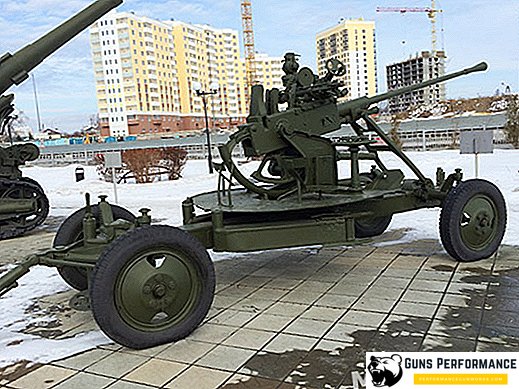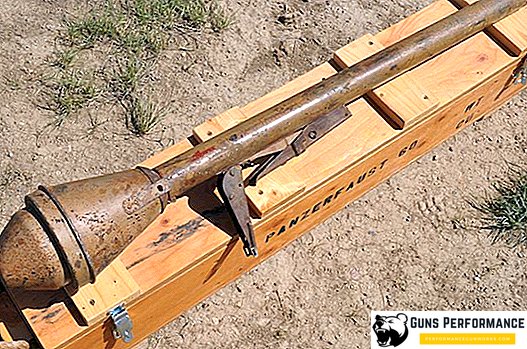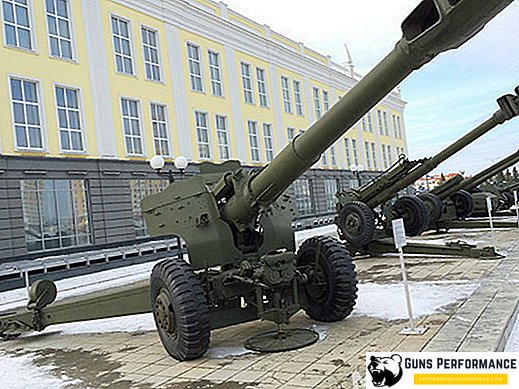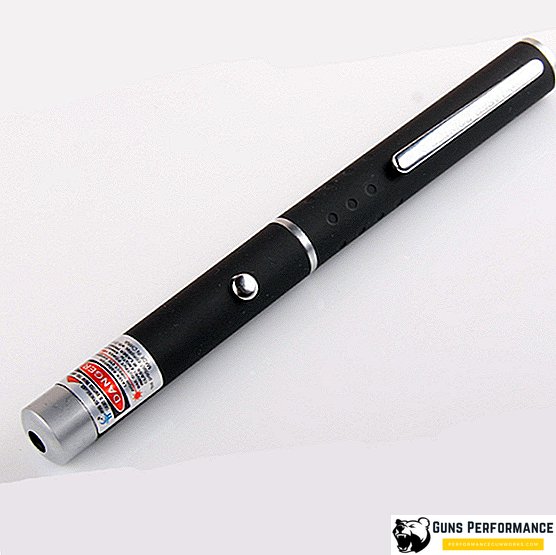
MiG-41. So far, practically nothing is known about this car - neither about its characteristics, nor even about the features of the external appearance of this aircraft. It is only known that this is the MiG-41 - a project of a heavy fighter-interceptor, which in the future will replace the MiG-31. This promising machine is called the most closed project of the Russian defense industry. Discussions around the new Russian aircraft have been abating for years on the virtual spaces of the Internet.
Earlier this year, Sergei Korotkov, Vice President of the Russian United Aircraft Building Corporation, told reporters that work on the creation of a new MiG-41 fighter continues. According to him, this will be a new-generation machine that will replace the high-altitude interceptor MiG-31, developed in the mid 70s of the last century. Korotkov also said that not only the designers of the OKB Design Bureau take part in the creation of the new machine. Mikoyan, but also representatives of other enterprises of the domestic defense industry.
Developments are carried out according to the task that was formulated by the Russian Ministry of Defense. This means that we are not talking about any kind of work on our own initiative (and this has often happened in the past). The military really needs a new aircraft to replace the well-deserved MiG-31. No additional information, which at least slightly lifted the veil of secrecy over the promising fighter, the official did not tell reporters.

Earlier, the Commander-in-Chief of the Russian Air Force Viktor Bondarev commented on the MiG-41 project. He said that the development of a new fighter-interceptor is actively being conducted and is at the stage of research and development (R & D), and in 2018, the RCD (development and development) began. Colonel-General told reporters that the adoption of the aircraft into service is planned in 2025.
Even earlier, in 2014, the well-known Russian test pilot Anatoly Kvochur spoke about the project of a new heavy fighter-interceptor. According to the pilot, the new plane should have appeared twenty years ago, and its speed should have reached 4.3 Mach.
To imagine the concept and idea of the machine being developed, it is not necessary to have access to closed laboratories or secret documents of the Ministry of Defense. You just need to understand what tasks the new fighter will perform, and for what kind of work it is intended. And you should take a closer look at the developments of the past years, the famous MiG-31 interceptor fighter - the first Soviet aircraft of the fourth generation, which took off in the sky in the distant 1975.
MiG-31: special purpose aircraft
Work on the creation of a new high-speed interceptor long-range interceptor began in the Soviet Union in the late 60s. This car first rose to the sky in September 1975. MiG-31 can safely and without irony be called a unique aircraft: it was able to reach speeds of up to 3 thousand km / h, and its combat radius was 720 km. This fighter was the first aircraft in the world, which was equipped with a radar with a phased antenna array. The MiG-31 was armed with the latest for its time long-range air-to-air missiles.
The MiG-31 was a highly specialized aircraft, it was originally designed to intercept strategic bombers, reconnaissance aircraft, cruise missiles, and even enemy satellites in low orbits.

It is curious that the flight units armed with MiG-31 aircraft had the status of special-purpose units (special forces) as part of the USSR Air Force.
In the 90s, designers OKB im. Mikoyan worked on the creation of a new heavy interceptor, which was to replace the MiG-31. We are talking about the so-called project 701, under which it was planned to create a 62-ton giant with a maximum speed of 2.5 thousand km / h and a flight range of more than 7 thousand km. Due to the difficult economic situation in the country, this project was never implemented. Also, the projects of the thirty-first deep modernization, which were started in the Soviet period, ended ingloriously.
In 2008, the program began upgrading the MiG-31. Fighters replace almost all of the electronics, they get a new R-37 rocket, which can hit the enemy at a distance of 400 km, as well as the modern Zaslon-M radar.
Today, the MiG-31 is perhaps the only domestic military aircraft, in relation to which the phrase "unparalleled in the world" is not an exaggeration. One of the main features of this machine is the high cruising speed, which is more than 2.5 thousand km / h.

Despite its unique performance characteristics, we can safely say that such a machine simply does not need the vast majority of the armies of the world. The MiG-31 is a highly specialized heavy high-speed interceptor aircraft, which was created to protect the vast expanses of the Soviet Union. His main task is the destruction of low-maneuverable targets, such as cruise missiles or strategic bombers. For air combat with assault fighters, the enemy MiG-31 is poorly suited. The maximum overload of the main armament of the fighter - the P-33 air-to-air missiles - is only 4G, which does not reliably hit high-performance fighters.
In the air forces of other countries, the functions of the MiG-31 are carried out by conventional fighters of the fourth or fifth generation, or by means of air defense.
Video about MIG-41
But for Russia, with its gigantic open spaces and huge length of borders, the use of such an aircraft is a pretty good solution. Therefore, the project of the new aircraft, which should replace the outdated MiG-31, seems absolutely appropriate. What will the new cars look like? What characteristics should it possess in order to confidently solve the task of protecting Russian air cordons in the next decade?
It should be recalled here that the service life of the MiG-31 fighters ends in 2028, and by this time the replacement for them should be ready.
What will the MiG-41 look like?
It has been repeatedly stated that the new fighter-interceptor will be developed on the basis of the MiG-31. However, it is hardly worth taking this information literally: rather, the MiG-41 will be created using the lessons learned from the creation of its predecessor, as well as thirty years of experience in using it. Since the first flight of the MiG-31, technological progress in the aircraft industry has made a huge leap, so it is unlikely that the new fighter will be similar to the MiG-31.
If the speed of the new machine is close to the level of Mach 4, then the MiG-41 can become the fastest combat aircraft in the world. With high probability we can say that when designing and building a new fighter, technologies will be actively used to reduce its radar visibility. Currently, "stealth technology" is a global trend that everyone is trying to follow. It is likely that the MiG-41 weapons will be hidden inside the aircraft fuselage. The estimated range of the MiG-41 is likely to be from 700 to 1300 km.

The new fighter will definitely be armed with a long-range R-37 air-to-air missile. In addition, it is reported that a new RVV-BD rocket with a dual-mode solid-fuel engine is being developed on its base. So we can confidently say that if the MiG-41 is embodied in the metal, then it will receive RVV-DB as part of its weapons.

It should be understood that speaking of the moment of the possible adoption of the MiG-41 fighter, we mean, most likely, the end of the next decade. It is clear that by this time, aircraft technology and aircraft armament systems will make a significant breakthrough, and some changes may be revolutionary. Experts believe that today we are on the verge of the birth of a new generation of aircraft. Laser weapons are rapidly developing, the Americans are most active in this direction. Ten years in the modern world is a huge period, during which time completely new technologies may appear, which we cannot even guess today.
One of the main threats in the foreseeable future for Russia may be military hypersonic aircraft, the development of which is currently actively engaged in the United States. As an example, the project of the Boeing X-51 hypersonic rocket, whose speed can reach 6 thousand km / h. Such weapons systems are capable of carrying a strategic threat, and for this purpose it is not necessary to install a nuclear warhead on them. Hypersonic missiles can hit enemy targets due to their enormous kinetic energy. Colossal flight speed makes intercepting such targets a very difficult task.
Video: MIG-41 project review
The fight against hypersonic aircraft is likely to be one of the tasks that the MiG-41 will perform. In addition, this aircraft must be able to deal with traditional threats, in the form of cruise missiles and enemy bombers. It is also planned that small satellites will be launched into low orbits from this aircraft.
Another issue to be addressed by designers during the implementation of the MiG-41 project is the maneuverability of this aircraft. In other words, will this fighter be controlled by a pilot or will it become an unmanned aerial vehicle? Considering the overloads that a person experiences at such speeds, the second option looks much more preferable. The problem, however, is that the domestic industry - since Soviet times - is lagging behind in the creation of UAVs. While Russia cannot even create a modern drone drone, making a remote-controlled interceptor is a far more difficult task.
Will the MiG-41 be built?
The answer to this question mainly depends on one factor - financing. The development of a new combat aircraft is very expensive.
Of course, the global trend in recent decades is the rejection of highly specialized machines and the development of universal combat aircraft. But, as mentioned above, a heavy speed interceptor perfectly matches the geographical conditions of Russia and can be an exception to the general rule.

Although, in case of refusal from further work on the MiG-41 project (for whatever reasons), its functions will be partially able to perform the PAK FA and new air defense systems that are currently being developed.












